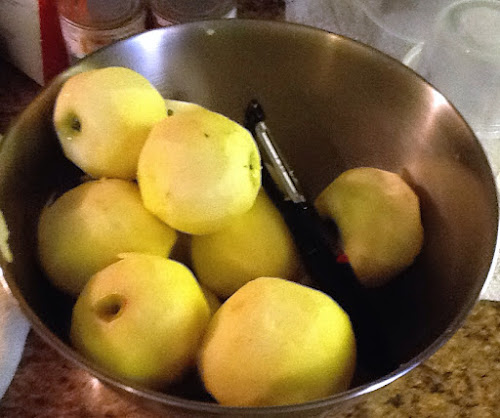I tried to have a diverse selection of chocolate cakes. All used cocoa, though the ATK recipe used unsweetened chocolate as well. I had a wide variety of mixing methods as well. I did not try to isolate variables; I just used recommended recipes as they are.
I made 6 cakes in 9 by 13-inch pans. I frosted each with American Buttercream, without the almond extract. Each frosting was tinted a different color so I could keep track of the different cakes. Eight of my friends and family had a small piece of each cake, served with seltzer as a palate cleanser. Most rated each cake 1-5 and some gave comments as well.
The test ended up being double-blind, as I had forgotten which cakes were which. I'll start with the winners.
I was initially prejudiced against the Chocolate Butter Cake from Cookie Madness; I thought all-butter cakes were inevitably dry. I included it in the test only because I was seduced by the picture and description. The butter cake ended up being one of the two winners. The flavor was amazing. The texture was more fine-grained and velvety than stick-to-your-fork moist. The mixing method is the paste method, where the butter and flour are combined first.
The other winner was the Chocolate Sour Cream Cake. It had awesome flavor, of course, but a slightly coarser and perhaps more moist crumb. I want to point out that no two people agreed on what was moist and what was dry, so it's very subjective. It is made by whipping the eggs and sugar until light, then stirring in the sour cream and vegetable oil.
Of these two winners, everyone loved one or the other—I loved both. Even those who had a different favorite rated one of these two very highly.
None of the other cakes was bad, and all had their strong points. As my Dad said, "I would eat any one of these."
The KAF Chocolate Cake was the most well behaved. If I were learning to bake, I would use this guaranteed recipe with its very clear directions. It also was the most attractive and came out of the pan best. It has a milk chocolate rather than dark chocolate flavor.
The Deep Dark Chocolate Cake from Hershey's was the easiest to make and had a good, dark flavor. One of the tasters thought it was slightly bitter even. It is simply stirred in one bowl.
The BakeWise
The Old Fashioned Chocolate Layer Cake from ATK had cocoa and unsweetened chocolate. Its taste was distinctive, probably because of the chocolate. It whipped the eggs and sugar first, like the sour cream cake.
I will make the butter and sour cream cakes a couple more times, to figure out which I prefer and to make any changes.
Note: my update and final conclusions are here.




























